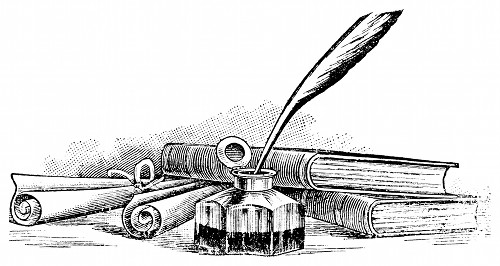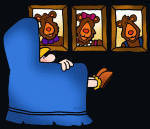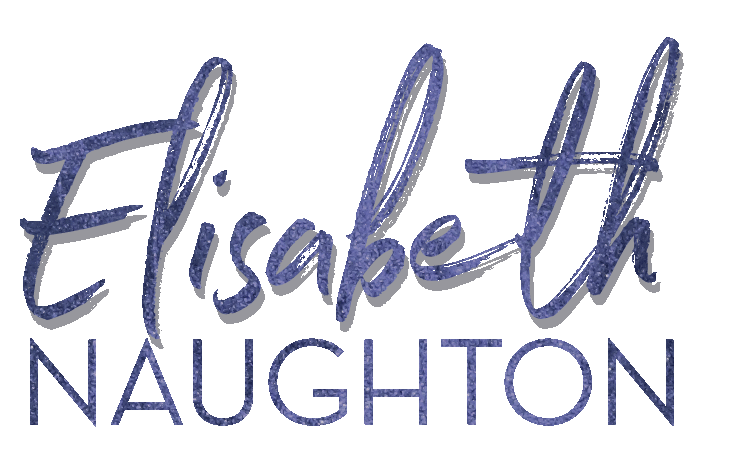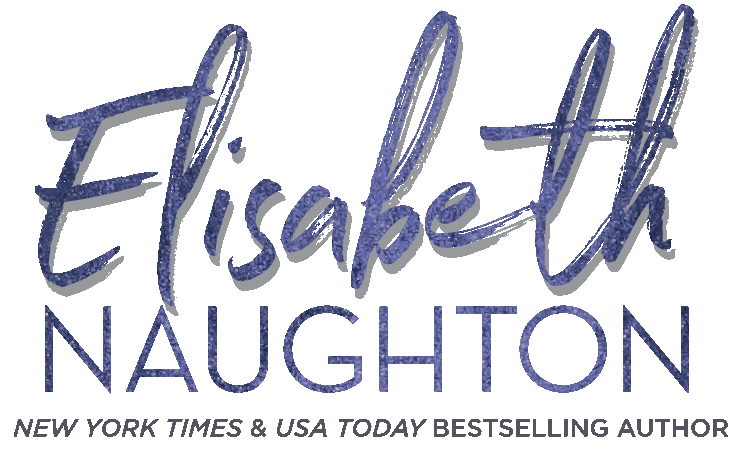Last Saturday I gave a workshop for the Rose City Romance Writers about pacing. The workshop was such a hit, I was asked to put the info up on my blog. So here it is…

Think back to the last movie you watched that you absolutely loved. What about it kept you riveted to your seat? This isn’t always an easy question to answer. A lot of times we think it’s the characters or the plot or the actors. Now think back to the last movie you watched that you absolutely HATED. I bet you can tell me exactly why you hated it. Usually, when we watch a movie we really don’t like, it’s because it’s “slow”. The same is true for books. How many books have you read where you read a chapter, then close the book and put it down and (if you continue reading) it takes you weeks—sometimes months—to finish? And how many books have you read where you literally can’t stop and stay up until 3am reading just to see what happens next?
The secret to a “can’t put down book” or “can’t stop watching” movie ISN’T characterization or plor or action or scenery or prose or any of the other things we, as authors, work so hard to perfect. The secret to a “can’t put down book” is pacing. Pacing isn’t easy to perfect. I wrote four books before I finally figured out pacing. And this from a woman who has a Masters Degree, aced every writing class she ever took, finaled in numerous contests, etc. Pacing—writing scenes that advance the plot and make readers hungry for more—takes practice. And I guarantee the main reason fantastic writers don’t sell is because they haven’t mastered pacing in their novels.
So what is pacing? Pacing is…
1. The speed at which your story moves.
2. The amount of time you spend on each part of the story.
3. The questions that are posed in every scene.
Questions are key. Without questions, your reader has no reason to turn the page to find answers. So in every scene you should be posing questions your reader can’t wait to find the answer to. Does this mean every scene flows at the same pace? Nope. Every scene has its own pace. Some scenes move faster than others. Action scenes tend to move faster than non-action scenes. Both are important to a book and give it a “tempo” unique to that story.
 A good rule of thumb is to apply The Goldilocks Principal:
A good rule of thumb is to apply The Goldilocks Principal:
The Pace of the story should never be too fast or too slow. It should be just right for each scene.
Let’s dispel a few myths. A fast-paced story does NOT include:
1. Constant action
2. Danger on every page
3. Non-stop dialogue
4. Shorter chapters
5. More chapters
6. Numerous POVs
7. Shorter scenes
A fast paced story doesn’t have to include a single murder or explosion or car chase. Fast paced stories are simply full of questions—story questions and character questions—that the reader can’t wait to answer. Take Susan Elizabeth Phillips, for example. She writes contemporary romance. No car crashes, explosions or murders…and I can’t turn her pages fast enough. Often times, movement and dialogue provide enough action to keep a reader engaged, and when movement and dialogue are combined with incredible story questions and awesome characterization, your reader won’t stop reading.
But that doesn’t mean you shouldn’t have ANY action in your book. Action is important in EVERY story, regardless of genre. Action is the easiest way to increase pace in a story. However, too much action diminishes the reader’s emotional experience. Think about the Die Hard movies. I loved Die Hard 1 and 2, but Die Hard 3 had too much action, not enough down time between action scenes. I was exhausted watching. When your reader gets exhausted, they’ll put your book down to catch their breath. You never want your reader to put your book down. Instead, let them catch their breath in a slower-paced scene. One still full of story questions that will make them turn the page to read more.
As a general rule, if you’re writing a book you should try for some movement & dialogue on every page. And in genre fiction, some BIG action should happen at least every 3 chapters. Something that shakes the story up and takes it in a different direction. Something that creates all kinds of NEW story questions in the reader’s mind.
 Remember that:
Remember that:
1. A story that has constant action will exhaust your reader.
2. A story that has zero action will bore your reader.
3. Try to vary the tension/speed of your scenes (tempo) to keep your reader guessing.
4. Chapter 4-5 is a good place to slow the tempo of your book to give your reader a chance to breathe.
So how do you do that? The easiest way to increase the pace of your novel is to:
1. Ignore the boring parts of your story. No one wants to read about the steps your character takes to make a cake.
2. Elaborate on the exciting parts—generally the exciting scenes should be longer and more detailed than the slower, less exciting scenes.
3. Add a time element/deadline to the story to increase urgency—Armageddon? A bomb blowing up? A serial killer on the loose? All add time elements/deadlines and increase pace.
4. Send your characters on a quest or put them on the run.
5. Add story questions in EVERY scene.
Easy, right? Not always. Let’s examine story questions in more depth. This graphic is from my awesome CP Joan Swan, and while at first it made my eyes cross, it’s right on the money.
For every question answered in a scene, another must be posed:
 We’ll use Shrek as an example. Think back to the opening of the movie. Fairy Tale creatures are being rounded up and sold. Immediately, a question pops into the viewer’s mind:
We’ll use Shrek as an example. Think back to the opening of the movie. Fairy Tale creatures are being rounded up and sold. Immediately, a question pops into the viewer’s mind:
Story Question 1: Why are fairy tale creatures being rounded up?
Before we find out the answer, another question pops up:
Story Question 2: Why are fairy tale creatures hiding in Shrek’s swamp?
At this point we’ve met Shrek. But it’s not until the next scene that we get an answer to our first question:
Story Answer 1: Lord Farquaad is rounding them up.
With that answer though, comes another question:
Scene 3, Story Question 3: Why does Lord Farquaad want the fairy tale creatures?
And in Lord Farquaad’s POV scene we find the answer to that question:
Story Answer 2: Fairy tale creatures are hiding from Lord Farquaad so they won’t be tortured or interrogated.
But we also have another question:
Story Question 4: What does Lord Farquaad want with the magic mirror?
And we get another answer:
Story Answer 3: Lord Farquaad wants the fairy tale creatures to tell him where the magic mirror is so he can find a princess to marry to become a real king.
This pattern of question-answer/question-answer propels the story forward.
But what happens when you add in character questions along with story questions? Readers don’t always read for plot alone. They want an emotional experience with every book. They fall in love with characters. And they fall in love with characters who keep them guessing. So a fast-paced plot intersperses story questions with character questions to tempt a reader and keep them turning pages.

Let’s look at Shrek again.
 In the first scene we have a story question AND a character question:
In the first scene we have a story question AND a character question:
Story Question 1: Why are fairy tale creatures being sold?
Character Question 1: Why doesn’t Shrek want Donkey around?
Now fast forward to scene two. We have another story question, but we also have another character question. And we also get our first answer:
Story Question 2: Why are fairy tale creatures hiding in Shrek’s swamp?
Story Answer 1: Lord Farquaad is rounding them up.
Character Question 2: Why doesn’t Shrek want anyone in his swamp?
In the third scene we start to get some character and story answers, but more questions are posed:
Story Question 3: Why does Lord Farquaad want the fairy tale creatures?
Character Answer 1: Because he wants to be alone.
Story Answer 2: Fairy tale creatures are hiding from Lord Farquaad so they won’t be tortured or interrogated.
Character Question 3: If Shrek is so mean, why does he let Donkey tag along on his quest?
This pattern continues in the fourth scene:
Story Question 4: Why is Fiona trapped in a castle with a dragon?
Character Answer 2: Because no one likes an ogre. (Fear of rejection.)
Story Answer 3: Lord Farquaad wants the fairy tale creatures to tell him where the magic mirror is so he can find a princess to marry to become a real king.
Again, the pattern continues, and what you wind up with is a series of questions/answers that propel the story forward. The green lines in this next graphic shows you how this works:

Makes sense, doesn’t it? Readers keep reading to have their questions answered.
So what if you’re asking questions, giving answers, and your story STILL feels slow? Here are some fail safe ways to pick up the pace and increase tension:
 1. Use shorter sentences.
1. Use shorter sentences.
2. Use shorter paragraphs.
3. More actions and reactions.
4. Less internal monologues.
5. Shorter dialogue.
If you want to slow the pace down you do the opposite:
 1. Longer sentences.
1. Longer sentences.
2. Longer paragraphs.
3. Less actions and reactions.
4. More internal monologues.
5. Longer dialogue
Also remember that readers are trained to close a book when they reach the end of a scene or chapter. So your job as a writer is to make the end of each scene so riveting, the reader won’t close the book. We call these ending hooks. Every scene should end with a hook (story or character question) that makes the reader desperate to find out the answer. Likewise, every chapter should end with a question that makes the reader crave more. A general rule of thumb is to save your BIG hooks (story questions) for the end of your chapters because readers are more likely to close a book at the end of a chapter rather than a scene. You want your reader so invested, they say, “I’ll just read ONE MORE chapter before I close my eyes.”
There are a number of ways to kill the pace of your book. I’m guilty of all of these in my first drafts:
1. Mistaking premise for plot
2. Not enough conflict
3. Not knowing your characters’ goals and/or motivations
4. Too much internalization/narrative (no more than 2 paragraphs in a row)
5. Too many details (I use the KISS principal: Keep It Simple Stupid)
6. Backstory
7. Scenes that don’t advance the plot
Thank God for CPs who remind us of these things. But more often than not I can tell when I’ve let the tension drop by doing one of these things in my book. When that happens, I remind myself to trust my gut. Nine times out of ten, when I get stuck writing, it’s because I’ve let the tension/conflict drop off and my pacing has slowed. A good thing to keep in mind is, if you, as the author, are bored just writing the book, your reader will be bored to tears reading it.
So what can you do to diagnose your pacing problems? Here’s a simple exercise. You can do this with the beginning pages of your novel or anywhere you feel you might be “slow” (I found this a while back but can’t remember the link to the article. I’ll try to summarize because it’s a great exercise):
Good pacing balances dialogue, sentence length, action and white space. So print off the first 3 pages of your WIP.
1. Highlight all your narrative with one color.
2. Underline all your backstory in red.
3. Underline all your short sentences in blue. (Yes, some sections will be highlighted or underlined multiple times.)
4. Highlight your action in another color.
5. Underline all your long, complicated sentences in pencil.
6. ***Star the beginning and end of your long paragraphs with the red pen.***
Now lay out all 3 pages on a table. What do you see? Are the elements balanced or are there one or two dominating elements? Fix it.
And finally…if you’ve made it this far…good for you! There’s one important thing to keep in mind when pondering the fast-paced novel:
 If you’re writing romance, romance readers already KNOW your book is going to end in a happily ever after moment. They don’t read to find out how the book is going to end. They read for the emotional experience they get from the tension and conflict the author creates. The more intriguing your story questions, the more conflict created and the more tense your book becomes. And a book with high conflict and high tension is a book readers WON’T put down.
If you’re writing romance, romance readers already KNOW your book is going to end in a happily ever after moment. They don’t read to find out how the book is going to end. They read for the emotional experience they get from the tension and conflict the author creates. The more intriguing your story questions, the more conflict created and the more tense your book becomes. And a book with high conflict and high tension is a book readers WON’T put down.
That’s it! Have a pacing question? Post away. I’ll try to help if I can.










June 14th, 2011 at 9:42 am · Link
This was brilliant. Absolutely brilliant. Light bulbs pinging all over my head. Now that I see the light, the idea of story questions makes perfect sense–and I think, as a reader, a big part of that is waiting for other characters to find the answers to secrets we as readers already have a clue about. I.e. Courtney Milan’s Unveiled is brilliantly paced and at several points we as readers learn a secret, then we have to wait to see when the other characters will discover it. Marie Sexton’s Sinners and Saints kept me up until 3 am for the same reason–we learn a secret early on, then wait and WAIT for the other character to discover it. It’s not unlike love scene tension–near reveals are more potent than heart to heart conversions the same way that an interrupted love scene keeps the tension high.
This blog came at the PERFECT time in my current WIP (and hey! I have a WIP!). I’m at the point where I’m pushing through to the end, but I know that I’m going to have major clean up on pacing in revisions. My Aha moment as a result of your blog is that I’m going to have have more “secrets” and more smaller story questions–I have a few big ones that hang over most of the book, but I think pacing will be improved if I can ensure that others are layered in as well.
My question for you is if the story question in a given scene or ending chapter hook can come from a secondary character?
Thanks again for an awesome, well-thought out article. SUBMIT this to RWR. I’m printing it off to put on my bulletin board by the computer and I almost NEVER print materials anymore.
Bethany
June 14th, 2011 at 9:53 am · Link
Big thank you for posting this topic. I’m pulling out my colored pens and WIP to see if I strike a balance or not. Cannot agree more that pacing is key because as a reader if the book I’m reading is slow I usually move it back down in my “to read” pile to maybe try again later.
Would you approach a novella with the same technique?
Thank you for the insight!
-Christa
June 14th, 2011 at 10:14 am · Link
Wonderful post. Bookmarked! I plan to use this when I’m editing my draft for pacing 🙂
June 14th, 2011 at 11:44 am · Link
Chance of Books – Yay on having a WIP!!! You are a talented writer and I can’t wait until your life settles down and you start subbing again. Only a matter of time for you.
As to your question…yes, I absolutely think story and/or character questions can come from secondary characters. Especially in ongoing series books, secondary characters offer a view point the main characters don’t have and a connection to the story from a different angle. Often times those are the MOST important questions posed in a book because they are those moments you mentioned when the reader learns a secret (story or character secret) before the main character does. Think about Shrek…Donkey discovered Fiona’s secret long before Shrek did. He knew she changed into an ogre at night and even though he was slightly grossed out by that fact, he saw that it made her that much more perfect for Shrek. However, his knowledge of that secret formed the black moment of the movie…when Shrek overheard Donkey and Fiona talking about her being an ugly ogre and thought they were talking about him.
Personally (and anyone who reads my work knows this), I love secondary characters and I love the questions they create. Some of my best lingering story questions come from secondary POV scenes.
June 14th, 2011 at 12:04 pm · Link
Christa – so glad the post helped! Yes, I’d definitely approach a novella this way. Novellas are simply shorter stories. They have to have the same elements that 100K word books do—a premise, an engaging plot, deep characterization, turning points, black moment and resolution—Albeit on an abbreviated scale. Romance novellas are actually EASIER to pose character and story questions in—in my opinion—because often times novellas are stories where the hero and heroine have already met or have some past relationship. One simple line or internal thought creates a major story question.
I did this in my Acapulco Heat novella in the BODYGUARDS IN BED anthology. Finn and Lauren know each other before the novella starts. Not only has he been her bodyguard the last few days, but he did security work at her brother’s gallery in Miami. They already have an attraction going, but he’s keeping his distance. The logical explanation is because he’s her bodyguard. But his animosity toward her is more than that. And I alluded to that in the first scene in his POV:
Finn glared at Lauren, his frustration with this crappy assignment, the Latin model with the wandering hands, the asinine photorapher, and most of all, her, reaching a screscendo.
Immediately, that line poses questions: WHY would a bodyguard think protecting a model on a beach was a crappy assignment? Most guys would considered that a cake assignment. And WHY is he so frustrated with her? His anger goes beyond a growing attraction and oath not to get personally involved with his client.
June 14th, 2011 at 12:06 pm · Link
Angela, thanks for the comment. Glad it was enlightening and hope it’s helpful when you’re editing!
June 16th, 2011 at 3:32 pm · Link
Thanks so much for posting this; I missed the workshop. (I was in Iowa.) What a wonderful explanation of pacing! Just what I needed. 😉